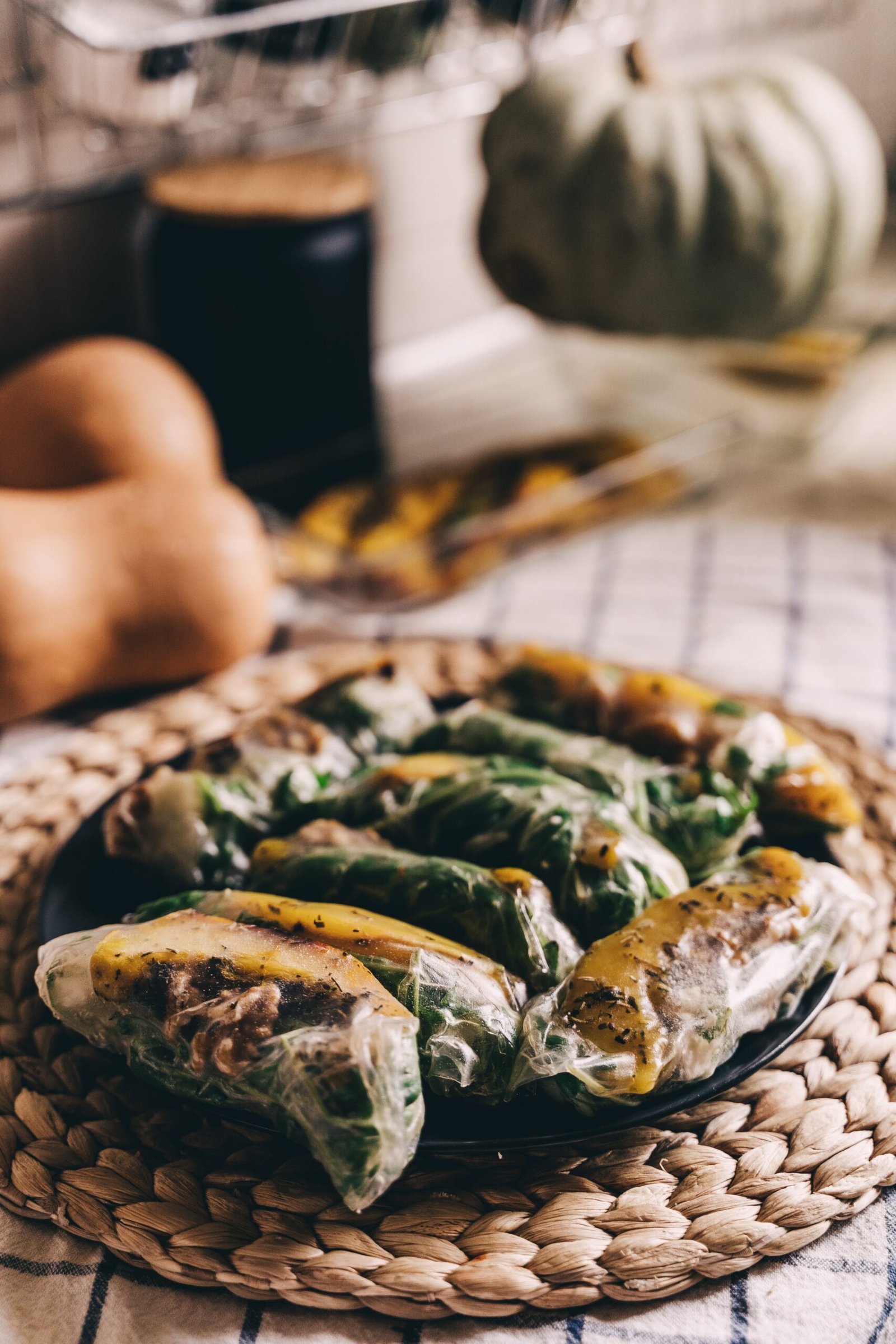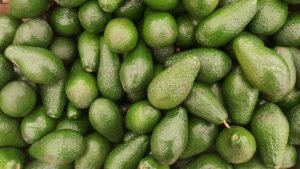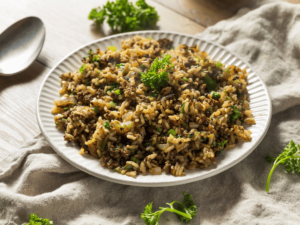This post may include affiliate links which means I may receive a commission from purchases made through links. I will only recommend products I have personally used. Learn more on my private policy page.
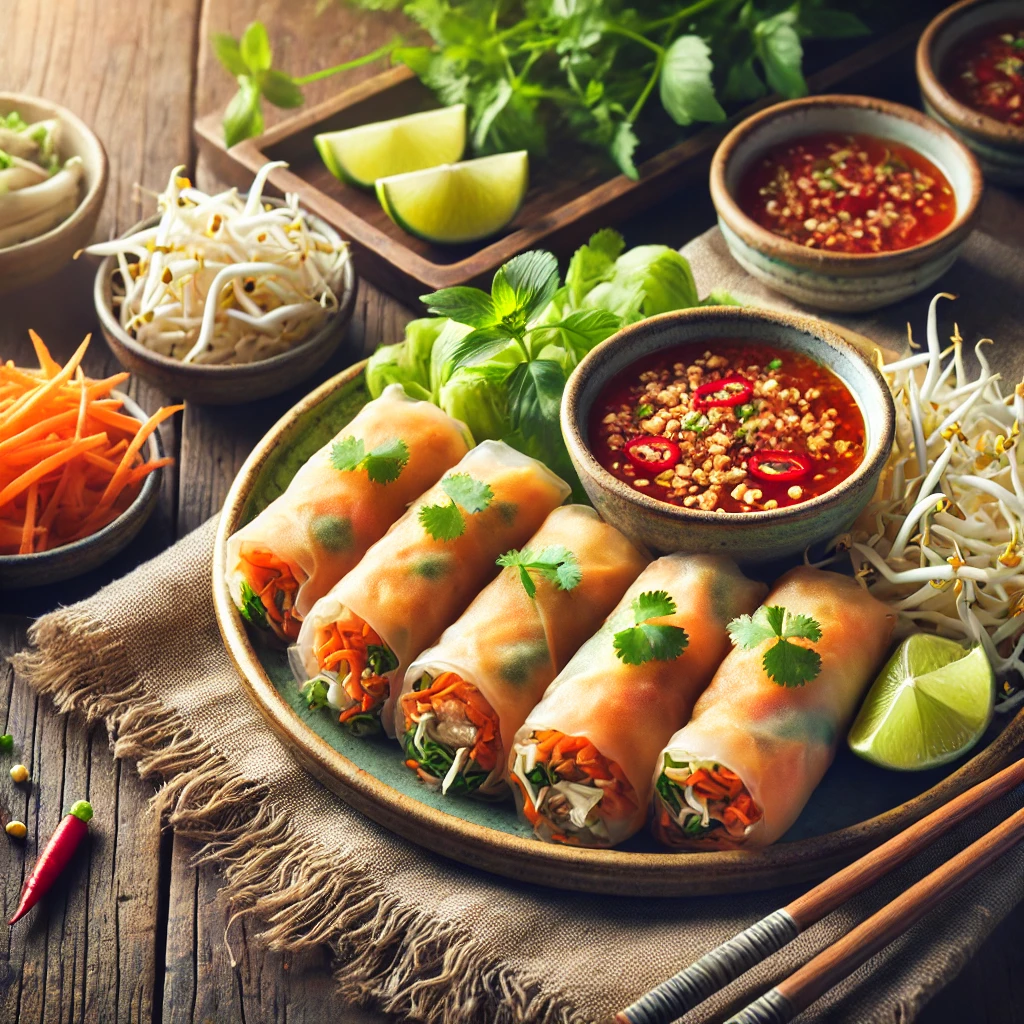
Thai spring rolls, also known as “poh pia tod” in Thai, are a delicious and popular appetizer that is enjoyed all over Thailand.
These crispy and flavorful rolls are filled with a variety of ingredients, such as vegetables, meat, and herbs, and are often served with a sweet and tangy dipping sauce. With their unique blend of textures and flavors, thai spring rolls are a must-try for anyone looking to explore the culinary wonders of Thailand.
In this guide, we will take a closer look at what makes these rolls so special and how you can recreate an authentic version in your own kitchen.
So get ready to tantalize your taste buds and join us on a journey through the flavors of Thailand with thai spring rolls.
The Origin and Cultural Significance of Thai Spring Rolls
Thai spring rolls, also known as “poh pia tod” in Thai, have a rich history that is deeply intertwined with the cultural fabric of Thailand. These delectable rolls are not only a popular street food but also have significant cultural significance in Thai cuisine.
Origin
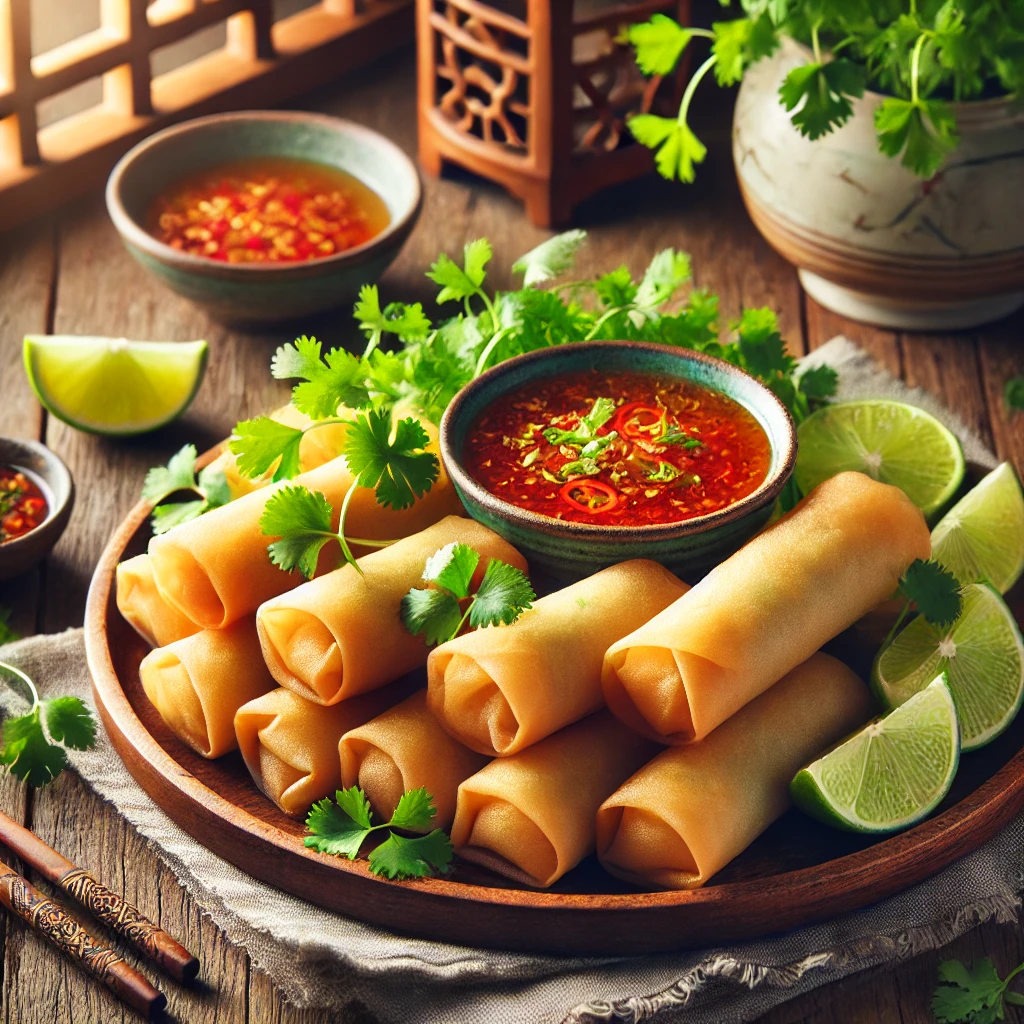
The origin of Thai spring rolls can be traced back to Chinese immigrants who settled in Thailand centuries ago. As they brought their culinary traditions with them, Thai spring rolls became a fusion of Chinese and Thai flavors, creating a unique and distinct dish.
Over time, the recipe for these rolls evolved to incorporate local ingredients and flavors, making them a quintessential part of Thai cuisine.
In Thai culture, food holds great importance and is often a symbol of togetherness and hospitality. Thai spring rolls, with their delightful combination of ingredients and flavors, have become a staple in family gatherings, festive celebrations, and social gatherings.
These rolls are often shared and enjoyed communally, fostering a sense of unity and camaraderie among the people.
Culture
Beyond their cultural significance, Thai spring rolls are also known for their symbolic meaning. The cylindrical shape of the rolls is believed to represent wealth and prosperity. As a result, these rolls are often served during special occasions and festivals as a way to invite good fortune and luck.
The preparation of Thai spring rolls is an art form in itself. It requires skill and precision to achieve the perfect balance of textures and flavors. The filling typically consists of a variety of ingredients, such as julienned vegetables, bean sprouts, vermicelli noodles, and herbs like cilantro and mint.
Additionally, meat or seafood can be added for those who prefer a non-vegetarian option.
The rolls are wrapped in rice paper and then deep-fried to achieve a crispy exterior, while the interior remains soft and succulent.
The combination of textures, from the crispy outer layer to the tender filling, creates a delightful eating experience that is enjoyed by people of all ages.
An Inside Look: Ingredients and Flavor Profile of Thai Spring Rolls
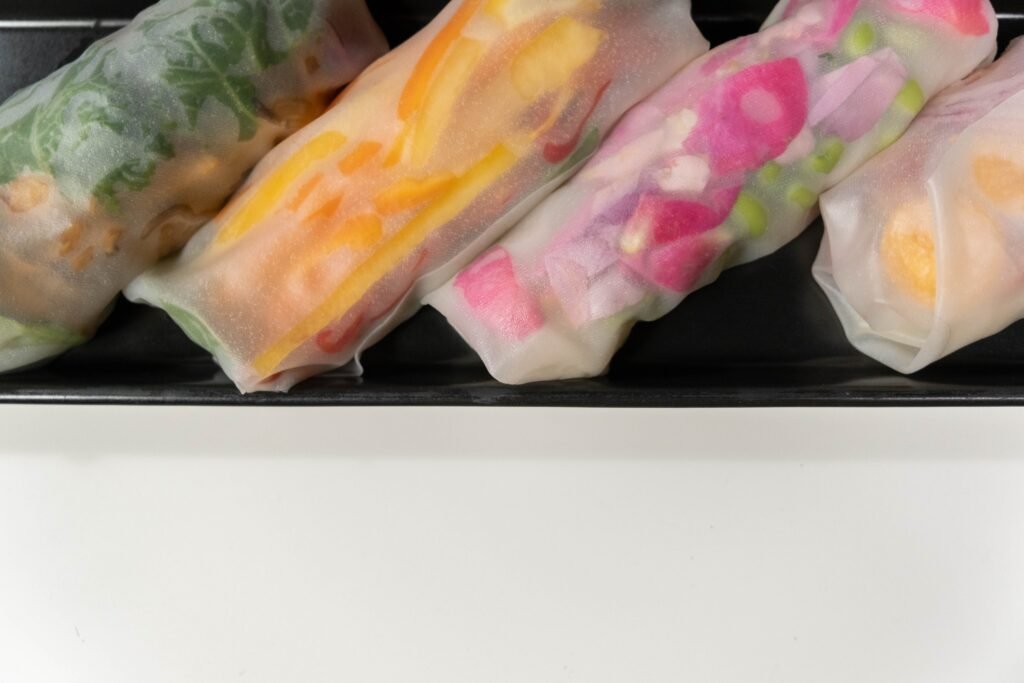
When it comes to Thai spring rolls, the magic lies in the blend of ingredients and the explosion of flavors that they create. Let’s take an inside look at the key components that make up the flavor profile of these delectable rolls.
The Filling:
Vegetables
At the heart of every Thai spring roll is the filling. This is where the magic begins. The filling typically consists of a combination of julienned vegetables, such as carrots, cabbage, and bell peppers.
These colorful and crunchy vegetables provide a refreshing and textural contrast to the crispy exterior of the rolls.
But it doesn’t stop there.
Vermicelli Noodles
Thai spring rolls also incorporate the use of vermicelli noodles, which add a soft and chewy element to the filling. These thin, translucent noodles are made from rice flour and are a staple in Thai cuisine.
They not only enhance the texture of the rolls but also absorb the flavors of the other ingredients, creating a harmonious blend of tastes.
Aromatic Herbs
No Thai spring roll is complete without the aromatic herbs that add a burst of freshness to each bite. Cilantro and mint are commonly used in the filling, providing a fragrant and vibrant element.
These herbs not only enhance the flavor but also contribute to the visual appeal of the rolls.
Meat or Seafood

To add a touch of umami, some versions of Thai spring rolls include the addition of meat or seafood. Options like shrimp, chicken, or tofu are often used to create a more substantial and satisfying filling.
These proteins infuse the rolls with additional flavor and provide a source of protein for those who prefer a non-vegetarian option.
The Wrapper:
Rice Paper
Now that we’ve explored the filling, let’s talk about the wrapper. Thai spring rolls are traditionally wrapped in rice paper, also known as spring roll skins.
They are pliable when soaked in water, making them easy to work with. The rice paper acts as a blank canvas, allowing the vibrant colors of the filling to shine through.
Dipping Sauce
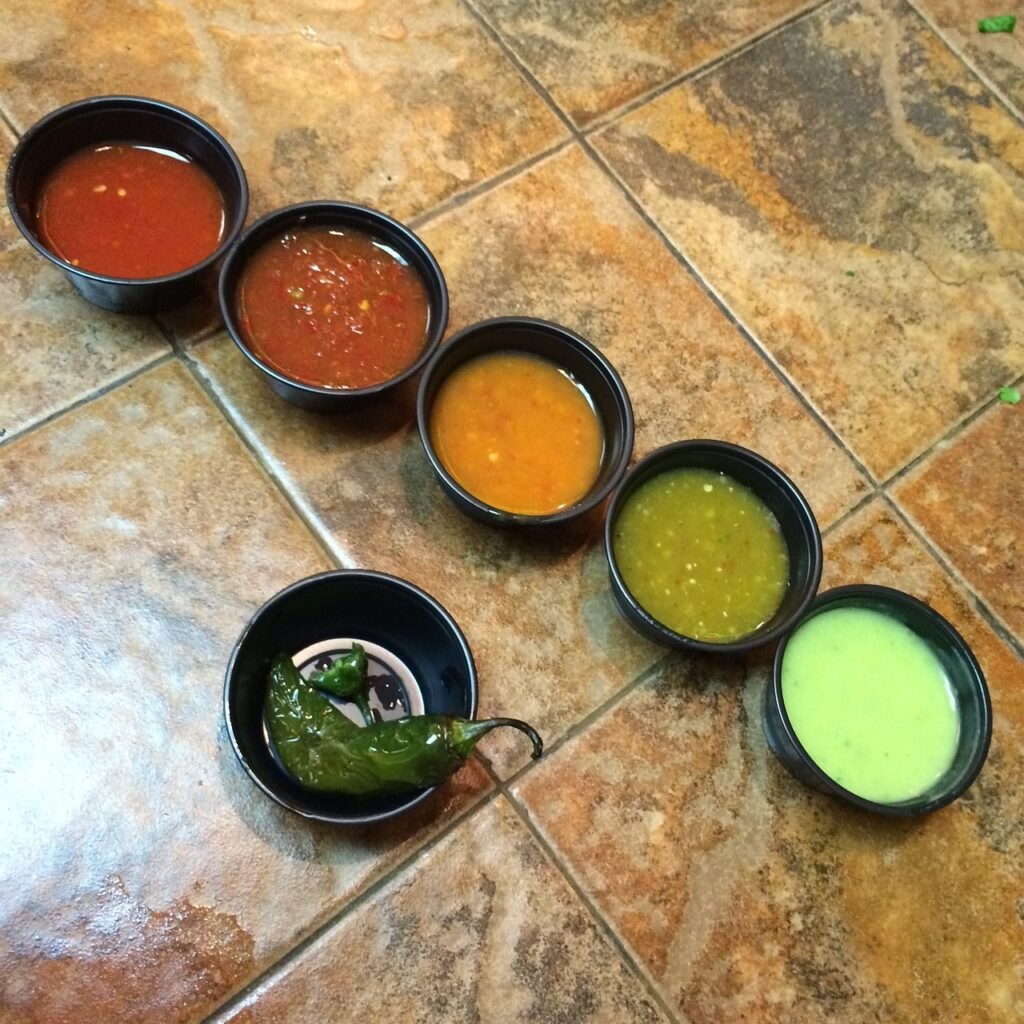
When it comes to the flavor profile of Thai spring rolls, there is one element that ties everything together—the dipping sauce. The sauce is typically a sweet and tangy combination of ingredients, such as soy sauce, fish sauce, lime juice, sugar, and chili.
This sauce elevates the flavors of the rolls and provides a delightful contrast to the crispy exterior.
Thai spring rolls are a symphony of flavors, textures, and colors. From the crispy exterior to the fresh and flavorful filling, every bite is a sensory experience. Whether you’re a vegetarian or a meat lover, there are endless variations to suit your taste.
Mastering the Art of Thai Spring Roll Making at Home
Once you’ve tasted the incredible flavors of authentic Thai spring rolls, it’s only natural to want to recreate them in your own kitchen.
The good news is, with a little practice and some basic techniques, you can master the art of Thai spring roll making at home.
Gather Ingredients
The first step in mastering the art of Thai spring roll making is to gather all the necessary ingredients.
- Make sure you have all the vegetables, noodles, herbs, and proteins you need for the filling. You can customize the filling based on your preferences and dietary restrictions, so feel free to get creative with your ingredients.
Prepare the Filling
2. Next, it’s time to prepare the filling. Start by julienning the vegetables into thin, uniform strips.
This will ensure that the filling is evenly distributed and provides a balanced texture.
3. Cook the vermicelli noodles according to the package instructions and set them aside. Finally, chop the herbs, such as cilantro and mint, and prepare any proteins you plan to include in the filling.
Assemble the Spring Rolls
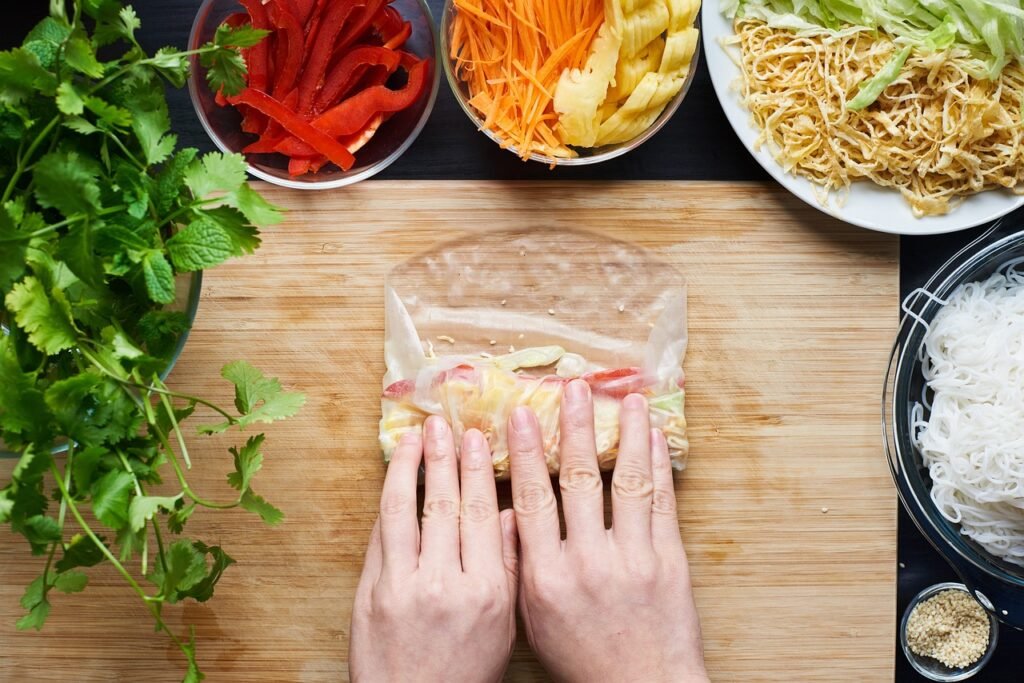
Now comes the fun part – assembling the spring rolls.
4. Fill a large bowl with warm water and dip one rice paper wrapper at a time until it becomes soft and pliable.
5. Place the wrapper on a clean surface and add a spoonful of the filling in the center. Be careful not to overfill the wrapper, as this can make it difficult to roll.
6. To roll the spring roll, start by folding the bottom edge of the wrapper over the filling, then fold in the sides, and finally roll it up tightly.
7. The rice paper should stick together to form a seal, but if it doesn’t, you can use a bit of water to help secure it.
8. Repeat this process until all the filling and wrappers are used.
9. Once you’ve assembled the spring rolls, it’s time to cook them.
10. Heat oil in a deep frying pan or pot until it reaches about 350°F.
11. Carefully place the spring rolls in the hot oil and cook them until they turn golden brown and crispy.
12. This should take about 3-5 minutes. Put them on a plate with some paper towels after removing them from the heat.
13. Finally, it’s time to serve and enjoy your homemade Thai spring rolls.
14. Serve them with a side of sweet and tangy dipping sauce for the perfect combination of flavors.
15. You can also garnish the rolls with extra herbs for added freshness and visual appeal.
Serving Suggestions: Best Pairings with Thai Spring Rolls
If you’re planning to serve Thai spring rolls, you might be wondering what to pair them with to create a truly memorable and satisfying meal.
Luckily, there are plenty of options that complement the flavors and textures of these delectable rolls.
Here are some serving suggestions and best pairings for Thai spring rolls that will take your culinary experience to the next level.
Steamed Jasmine Rice

One classic and delicious option is to serve Thai spring rolls with a side of steamed jasmine rice.
The soft and fluffy rice provides a neutral base that allows the flavors of the spring rolls to shine.
Simply spoon some rice onto your plate, take a bite of the crispy roll, and savor the combination of textures and flavors.
Spicy Peanut Sauce
For those who enjoy a bit of spice, pairing Thai spring rolls with a spicy peanut sauce is the secret.
The creamy and slightly spicy sauce adds a rich and nutty element that enhances the flavors of the rolls.
Simply whisk together peanut butter, soy sauce, lime juice, chili garlic sauce, and a touch of honey for the perfect dipping sauce.
Drizzle it over your spring rolls or serve it on the side for a burst of flavor with each bite.
Thai Papaya Salad
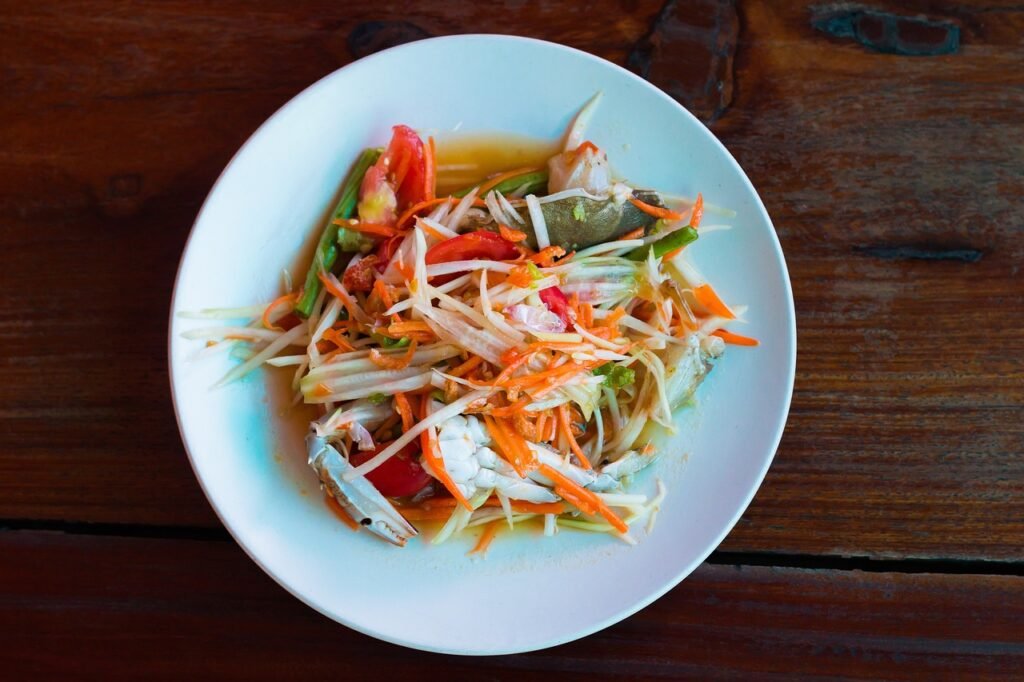
Another popular option is to serve Thai spring rolls with a side of fresh Thai papaya salad, also known as “som tam.”
This tangy and refreshing salad is made with shredded green papaya, tomatoes, green beans, and peanuts, dressed with a zesty lime and fish sauce dressing.
The combination of flavors and textures from the crispy rolls to the crunchy salad creates is delightful.
If you’re looking to add some freshness to your meal, serving Thai spring rolls with a side of mixed greens and a light vinaigrette is a great choice.
The crisp lettuce, cucumbers, and carrots provide a refreshing element that complements the rich flavors of the rolls.
Drizzle some vinaigrette made with lime juice, fish sauce, sugar, and a hint of chili for a burst of tangy goodness.
Thai Curry
For a more substantial meal, consider pairing Thai spring rolls with a fragrant and flavorful Thai curry. The aromatic spices and creamy coconut milk-based curry provide a hearty and satisfying accompaniment to the rolls.
Choose your favorite Thai curry, such as green curry or red curry, and serve it alongside the crispy rolls for a complete and delicious meal.
There are endless possibilities when it comes to serving suggestions and pairings for Thai spring rolls.
Vegan and Gluten-Free Alternatives for Thai Spring Rolls
Whether you follow a vegan or gluten-free lifestyle, there are plenty of delicious alternatives that allow you to enjoy the flavors of Thai spring rolls.
With a few simple swaps and creative ingredient choices, you can create vegan and gluten-free versions of these delectable rolls that are just as satisfying and flavorful.
For those following a vegan diet, replacing meat or seafood in the filling is easy.
Tempeh
Instead of shrimp or chicken, you can use tofu or tempeh as a protein alternative. These plant-based options not only provide a source of protein but also absorb the flavors of the other ingredients, creating a delicious filling.
Simply marinate the tofu or tempeh in soy sauce, lime juice, and spices before adding it to the rolls.
Tamarind
When it comes to the dipping sauce, you can make a vegan version by using tamari instead of traditional soy sauce.
Tamari is a gluten-free soy sauce alternative that is made without wheat. Combine tamari with lime juice, agave nectar or maple syrup, chili flakes, and garlic for a sweet and tangy sauce that pairs perfectly with the spring rolls.

Gluten Free Rice Wrappers and Vermicelli Noodles
For those following a gluten-free diet, the key is to find gluten-free rice paper wrappers and gluten-free vermicelli noodles.
Rice paper wrappers made from rice flour are naturally gluten-free, but it’s important to double-check the packaging to ensure there are no hidden gluten ingredients.
As for the vermicelli noodles, opt for rice or mung bean noodles that are labeled gluten-free.
In terms of the filling, stick with a variety of julienned vegetables like carrots, bell peppers, and cabbage.
These vegetables add color and texture to the rolls while keeping them gluten-free.
Be sure to avoid any pre-packaged sauces or dressings that may contain gluten, and instead, opt for fresh herbs like cilantro and mint for added flavor.
When it comes to serving suggestions, the possibilities are endless for vegan and gluten-free alternatives.
Consider serving the spring rolls with a side of coconut rice, quinoa, or even cauliflower rice for a gluten-free option.
Add a side of fresh mango or papaya slices for a burst of sweetness and freshness.
In conclusion, whether you’re following a vegan or gluten-free diet, there are plenty of alternatives that allow you to enjoy the delicious flavors of Thai spring rolls.
With some simple ingredient swaps and creative choices, you can create vegan and gluten-free versions that are just as tasty and satisfying.
So don’t let dietary restrictions hold you back from exploring the culinary wonders of Thailand.
Related Articles:
The Unexpected Benefits of Gluten Free Meals
Keep it Cool: How to Store Onions for Maximum Freshness
As an Amazon Associate, I earn commission from qualifying purchases.

